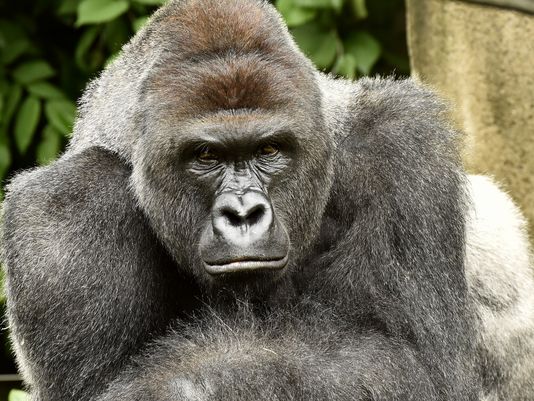POLL: Did The Cincinnati Zoo Really Need To Shoot And Kill Harambe The Gorilla? Yes/No?

(EnviroNews Polls) — Cincinnati, Ohio — A very sticky situation went down on May 28, 2016, for the Cincinnati Zoo’s Dangerous Wildlife Team when they were forced to make a quick decision. A four-year-old boy had fallen into the pen of a critically endangered 17-year-old male western lowland gorilla, and they would have to do something about it.
The gorilla wasn’t attacking or hurting the lad — just dragging him about and messing around with him a bit. Nevertheless, the team decided not to take any chances and put Harambe the gorilla down with gunfire.
The zoo’s Director Thane Maynard backed the team’s decision telling reporters, “They made a tough choice and they made the right choice because they saved that little boy’s life. You’re talking about an animal that’s over 400 pounds and extremely strong. So no, the child wasn’t under attack but all sorts of things could happen in a situation like that. He certainly was at risk.”
Despite Director Thane’s assurances, many citizens aren’t convinced and have weighed in across social media with hashtag #Hambre, accusing both the parents and the zoo for being at fault.
You may view the bystander videos of the event at this link if you haven’t seen them already.
Many have asked why the Cincinnati Zoo had to shoot and kill the creature when it wasn’t attacking the boy, and wonder why tranquilizer guns or other methods weren’t used instead.
So can someone tell me why they didn't have tranquilizer to stop him? #RIPHarambe #Cincinnatizoo
— Welcome to priv⚡️ (@PrivyofHouston) May 29, 2016
We put it to you, our readers and viewers, on this controversial shooting of a critically endangered animal: Did the Cincinnati Zoo make the right decision in shooting and killing Harambe the gorilla? Please cast your official vote in the poll below via Facebook or Twitter.
POLL: Did The @CincinnatiZoo Really Need To Shoot And Kill #Harambe The Gorilla? Yes/No? VOTE NOW! #RipHarambe
— EnviroNews Polls (@EnviroNewsPolls) May 29, 2016
VOTE ON FACEBOOK
FILM AND ARTICLE CREDITS
- EnviroNews Polls - Poll Generator


![Leading the Charge for America’s Wild Horses on Capitol Hill: NBA/NFL Celeb. Bonnie-Jill Laflin: ‘[Politics] won’t stop us from fighting’](https://cf-images.us-east-1.prod.boltdns.net/v1/static/1927032138001/f46b2158-cead-47f0-ab44-4b027059411a/4e4afcf2-937d-4a9d-acba-1b82e2efd4c6/160x90/match/image.jpg)


